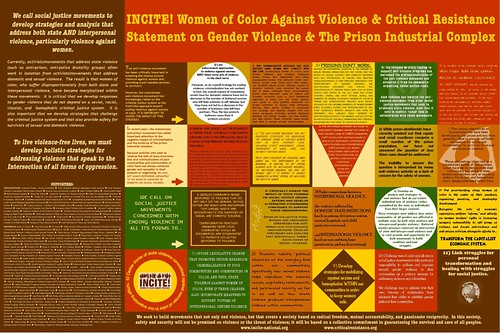Updates on Shannon Palmer, Jasper Rushing.
 The note at the end of this post came into my box last night on a wave of hushed grief, asking to be placed where it might be found by the family of Shannon Palmer, and those in his community who responded to his killer with outrage and condemnation. It contains condolences from someone who knew and loved Jasper Rushing before he grew severely disturbed and took his first victim's life. It does not argue that he did no wrong. Rather, it just implores the rest of us to understand that he, too, has suffered, and was lost long ago.
The note at the end of this post came into my box last night on a wave of hushed grief, asking to be placed where it might be found by the family of Shannon Palmer, and those in his community who responded to his killer with outrage and condemnation. It contains condolences from someone who knew and loved Jasper Rushing before he grew severely disturbed and took his first victim's life. It does not argue that he did no wrong. Rather, it just implores the rest of us to understand that he, too, has suffered, and was lost long ago.I slept very little after contemplating the significance of this assertion that Rushing might have been a victim of the kind of disorder that claims the innocent and vulnerable I fight for, too. I had already done my share of dehumanizing him, branding him as a twisted sociopath, presuming his character and guilt were clear by his history, his access to Shannon, his method of torture, and his soulless gaze into the camera at the ADC. I stopped just short of arguing that he get the death penalty, I found his crime so heinous. No way was he in the same class as Shannon, my own loved one, or me.
I can't imagine that Shannon's killer could have executed him in the manner he chose if he had any sort of conscience or humanity left in his being. Yet I don't doubt the sincerity of the author of this note who tells us that Rushing was once a good kid who underwent some kind of horrible transformation, and that even as a hardened killer in prison he was living in fear.
Searching the internet I could find nothing but court calendars to reference Rushing's history of kidnapping and premeditated murder, preceded by more petty crimes and drug abuse. I couldn't even find news accounts of his most serious crimes or convictions. Buried in those case entries, however, is evidence that others saw a psychiatric illness emerging over a decade ago - before the first time he killed someone - compelling more than one judge to order a competency exam before sentencing him.
Not everyone who is ordered to undergo a competency exam has a disabling mental illness, nor is everyone with a psychiatric disorder automatically exempt from the consequences of harming others. The Diagnostic and Statistical Manual (DSM IV) that mental health professionals use to label social deviants includes antisocial personality disorders and classifications for pedophiles, which are often associated with very serious predatory behavior. Those are not what advocates usually refer to as "serious mental illnesses" - we're most often talking about mood and thought disorders like manic-depression and schizophrenia, not severe personality disorders. People with diagnoses in the former category are far more often victims than perpetrators of violent crime.
Nevertheless, like it or not, the truth is that sometimes people who do violence to others are suffering from serious mental illness, their ability to exercise good judgment often compounded by the use of drugs or alcohol. In fact, it would be hard to look at Shannon's murder alone and suggest that his killer was in any way "well". Most certainly there's some kind of pathology underlying his actions; I just don't know what kind of pathology it is, though sadism comes to mind. He doesn't strike me as just being fearful - that murder was vicious.
Even if Rushing had a psychotic break in his youth and developed schizophrenia, that should not overshadow the fact that the vast majority of Americans with a psychiatric disability are non-violent individuals contributing to the life of our communities and the well-being of our families. You wouldn't know that we're nuts just by looking at us or the surface of our lives. Unfortunately, however, it's people like Jasper Rushing who grab the headlines and threaten to define us, not victims like Shannon Palmer, or survivors like me. Seldom is a big deal made of the psychiatric status of vindictive, selfish, greedy people who violate others horribly while perfectly "sane". That's who we really need to beware of.
It is true that untreated mental illness can cause symptoms that "endanger self or others": severe paranoia, auditory hallucinations, agitation, poor impulse control, delusional thinking, grandiosity, emotional detachment, terror, and despair. For that reason we have laws that require involuntary hospitalization and compulsory outpatient treatment for people who - left untreated - may become a danger to the rest of us or kill themselves.
So many of the mentally ill attempt to self-medicate, too, which often aggravates our symptoms, resulting in disastrous consequences - including the trans-institutionalization from mental health settings to places like shelters, jails and prisons for a range of criminalized behavior that has as much to do with poverty as it has to do with the nature of one's disability.
Over the course of the past 30 years it's been increasingly hard to get someone who needs psychiatric care into an inpatient setting, a group home, or a public outpatient clinic that has the capacity to really help them be "well", because the profoundly disabling nature of mental illness forces them to depend on public resources. As those budgets have shrunk and affordable housing has disappeared, people with psychiatric disabilities have been dumped into the streets to fend for themselves, suffering a multitude of traumas on top of whatever inner demons already torment them.
In the same period of time, the numbers of people with mental illness in America who have been put behind bars has risen exponentially. The Huffington post has an interesting video and links to other articles that address this.
I worked with the the homeless mentally ill for over a decade in Ann Arbor, and saw more go through the criminal justice system that into the mental health system because jails and prisons were the only doors the community was willing to pay to hold open for them anymore All other avenues to seek "safety" from the streets and shelters or "help" for their symptoms had been systematically closed off, and mental health and criminal codes were revised to reflect society's determination to punish our deviants, public nuisances and eyesores with jail and - for repeat offenders of even petty crimes - with prison.
Do not be mistaken about what prison in America is, by the way - it can be horribly brutal, even if you don't end up getting killed.
With public mental health dollars shrinking, the laws that were originally intended to protect the civil liberties of the mentally disabled were used to justify denying them their rights to humane, life-saving treatment, contributing to their rising rate of criminalization and incarceration. Many people in mental health and on the front end of the criminal justice system have resigned themselves to the notion that if someone needs intensive psychiatric intervention to protect them or others, the only way they'll get it is as a convicted criminal. That's such a tragic myth, as is the one that addicts will get the treatment they need in prison, too.
By the AZ Department of Corrections' own count at the end of last month, 9,362 of their 40,204 prisoners were individuals requiring on-going mental health services. Only a handful in AZ state prisons have access to anything more than an MD who might prescribe the right psychiatric meds, however. They're otherwise left to fend for themselves and cope with their illness and the terror of their environment, which the rate of suicides and homicide victims among them suggests is not an easy feat. The only "treatment" out of the norm that many end up getting is placement in solitary confinement or cages as a behavior management tool or outright punishment for their inability to adapt. Isolation is not a therapeutic intervention. It is known to make the sane go mad.
Jasper Rushing perpetrated horrible murders over the course of his adult life; I have no idea why. That doesn't make him any less a victim of neglect, however, if he wasn't getting the care he needed for whatever psychiatric disorder he had. That means that Shannon is a victim of both Jasper Rushing and the AZ Department of Corrections. The two men were locked into the same modified one-man cell, each one, by their family's accounts, fearful and not doing well.
From what I've seen and heard, that's not an isolated exception to an otherwise functional system. The ADC has a pattern of discontinuing necessary psychiatric meds and housing symptomatic prisoners in poorly supervised, over-populated dorms or in close quarters with people not likely to put up with them. When placed in higher security yards and cells - presumably because someone had concerns about their behavior and ability to be safe - it appears as if the seriously mentally ill are simply being contained, not cared for. Marcia Powell, after all, was supposed to be on a 10-minute suicide watch, and look at what happened to her. Even exposed in a cage in the middle of the yard, 20 feet from an air-conditioned station for guards, no one looked out for her welfare.
We can - and should - each pressure the ADC, directly or through our elected officials, to reform their system such that people with mental illness don't keep dying off as they are. We should also forward our concerns about the safety and welfare of loved ones in the prisons - regardless of their crime or disability - to the Department of Justice Civil Rights Division, asking for a CRIPA investigation into the patterns underlying the murders, suicides, and neglect. But the most effective tool for long-lasting change would be new legislation that assures critical rights and remedies to prisoners to prevent these kinds of things from happening in the first place.
We also need to reform this legal system which criminalizes and imprisons people for the symptoms of their illness, as Shannon was for climbing a utility tower. Such reform also necessitates that resources exist in the community to provide adequate treatment and housing for those at risk of being inappropriately criminalized without it. The price of imprisonment, as I hope people see by now, is paid not only in tax dollars, but also in damaged and lost lives. We must end this madness now. Too many people are being thrown away for the crime of being ill.
I am one of the"murderers" family members. I was there at his birth, through his childhood and up through his young adulthood. He is a struggling mentally ill person fighting to survive as well. He was a beautiful baby with an inquisitive, intelligent mind. He grew to be a troubled child with many issues that his family attempted to deal with. As a young adult he seemed like the average boy/man. He was loving and kind through out his first 20 years. I'm not sure to this day what changed...
I love Jasper and always will, but I don't know who this man is. I know he's been begging for months to be taken out of general population because he just didn't feel safe himself. I am sorry to the family of Shannon, I am horrified and ashamed...your family is in my prayers along with our family who is at a loss as to where our beautiful boy went...























